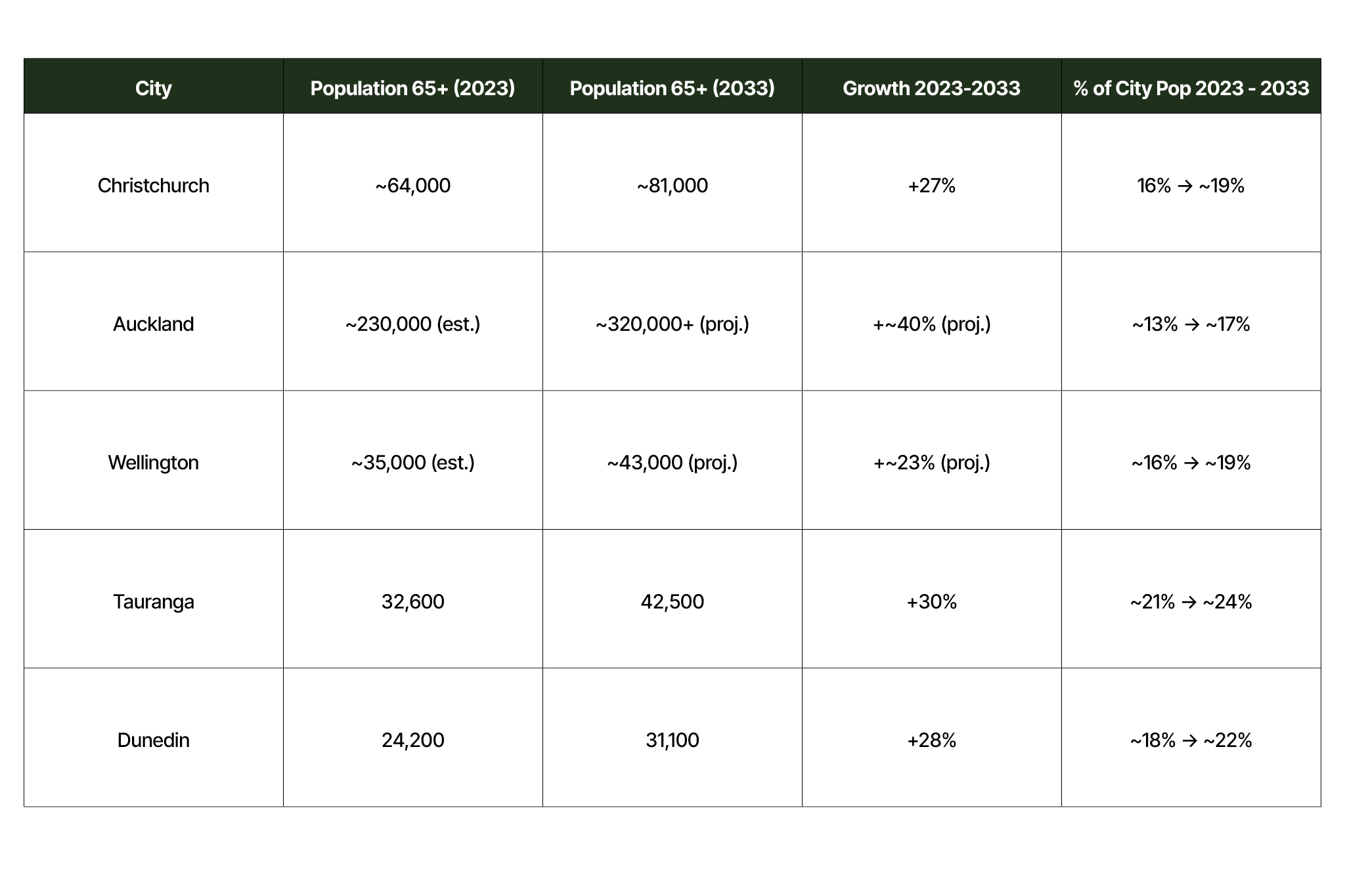-4.png)
When The Press reported that Ryman Healthcare has walked away from its $248m Park Terrace development in Christchurch, it sent shockwaves through the industry. This was supposed to be a flagship project – 280 care beds and retirement units overlooking Hagley Park – and now the site is back on the market.
The official line is financial pressure. Ryman has posted a $436.8m annual loss, paused all unstarted projects, and is selling off land to reset its balance sheet. But as commentator Mike Blackburn highlighted, this isn’t just about balance sheets – it’s about the model itself starting to creak.
Elderly housing consents have halved nationally in the past two years, from more than 3,000 units in 2021–22 to about 1,500 today. Canterbury has followed the same trend, down nearly 40%. Christchurch is delivering fewer than 100 new retirement units annually. Selwyn and Waimakariri are still holding around 100–120 units each, but the pipeline overall has slowed dramatically.
The need hasn’t gone anywhere – New Zealand’s over-65 population will surge over the next 15 years – but the old village model can no longer keep up. Villages are capital-intensive, slow to deliver, and increasingly out of step with what retirees actually want.
The Cultural Problem With Villages
For years, villages were marketed as aspirational. But the generation now retiring – the baby boomers – don’t see them that way. They didn’t enjoy visiting their own parents in these facilities. Phrases like “God’s waiting room” stuck because they reflected reality: large, communal, often clinical environments that felt more like the last stop than a fresh chapter.
Boomers are healthier, wealthier, and more independent than their parents. They want something entirely different:
In short, they want downsizing without compromise.
The Silver Tsunami of Demand:
This is where the real story lies. The demographics are locked in, and they’re staggering. By 2034, one in five New Zealanders will be over 65. Christchurch alone will see its 65+ population grow by more than 50% between 2018 and 2038. Tauranga, Dunedin, and Wellington will follow the same curve. Even Auckland – historically our “young” city – is greying rapidly.
Here’s the scale of change:

That’s tens of thousands of new retirees in every major centre. In Christchurch, we’re talking about an extra 17,000 seniors in just a decade.
Equity-Rich, Ready to Move
Unlike first-home buyers, this group isn’t short of money. Around 72% of Kiwis over 65 own their homes outright, sitting on decades of capital gains. Baby boomers collectively hold about 60% of the nation’s wealth – most of it in property. Downsizing isn’t a financial burden; it’s a financial strategy. It frees up cash for travel, family, and health, while giving them a more manageable home for the years ahead.
The problem isn’t demand – it’s supply. The homes they want simply don’t exist in sufficient numbers. And the old village model doesn’t appeal.
The Opportunity Beyond Villages
Ryman’s retreat from Park Terrace is a warning sign, but also a turning point. If even the biggest operator can’t make the numbers work on a 280-unit development, then perhaps the model itself is no longer the answer.
What New Zealand needs now is a new wave of downsizer-friendly housing:
This isn’t theory – it’s what the data and the market are already telling us. Surveys show up to 70% of retirees would downsize if the right homes were available. And unlike villages, which cater to 6–14% of seniors, this model appeals to the 80%+ who want independence but don’t want to be trapped in a four-bedroom house forever.
Why Rosefern Is All In
At Rosefern, we’re not trying to be the next Ryman. We’re not building villages. We’re building homes – compact, architecturally designed, future-proofed homes in established Christchurch suburbs. Homes designed for people who want to free up capital without giving up lifestyle.
The Park Terrace site will find a new use, but it represents a bigger truth: the village model is broken. The next generation of retirees won’t accept “God’s waiting rooms.” They’re demanding something better – and we’re building it.
Christchurch is the launchpad, but the opportunity is nationwide. The numbers are too big, the demand too strong, and the cultural shift too entrenched for this to be ignored.
This isn’t a niche. It’s the data driven future for us…